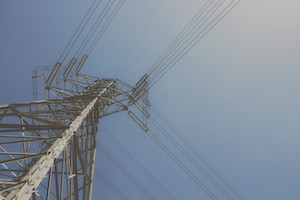No turkeys, but many other birds to appear in November skies
On this coming Thursday evening, after the Thanksgiving feast and the football games, take a walk under the stars if the weather permits. It's a great way to fight off the drowsing effects of tryptophan and to get away from relatives, even the ones you like! Seriously, it's a magical activity on any night this time of the year because of the early sunset and the fact that it's generally not too outrageously cold yet.
The first thing you'll notice later this week or this weekend is the lovely crescent moon perched in the Butler southwestern sky.
While there aren't any turkey constellations on the celestial stage, there are a lot of other birds up there. In fact, out of the 88 human-made constellations seen from Earth, nine of them are birds — more than any other animal. Through the course of a year over Minnesota and western Wisconsin, we can see four of the bird constellations, and the two biggest ones are available now in the evening skies.
Cygnus the Swan and Aquila the Eagle are currently flying in the low western sky. They're easy to spot by using the Summer Triangle, not a constellation but a very handy tool. Just look for the three brightest stars you can see in the western sky and that's it. I know it's strange to be talking about a summer triangle in November but believe it or not there are still a few summer stars and constellations hanging in there in the western sky. The highest star is Deneb. The star on the lower left is Altair. The brightest star Vega, occupies the lower right corner. All three of these stars are the brightest in their respective constellations.
Two of the summer triangle constellations are birds. Deneb is the brightest star of Cygnus the Swan, that's currently making its annual swan dive toward the western horizon. It's easier at first to see Cygnus by its nickname, "The Northern Cross." Deneb is at the top of the nearly upright cross and just below it are three moderately bright stars arranged horizontally that depict the crosspiece of the cross. Pan down from the crosspiece, and the next brightest star you'll see is Albireo, which marks the foot of the cross.
Turning the Northern Cross into a swan is easy with a meager amount of imagination. Deneb's the tail of the Swan, Albireo's the head, and the crosspiece becomes the major section of its wingspan. Look for a dim star to the upper left of the crosspiece and two dim stars to the upper right. Join them all together and you'll end up with the nice curved wingspan.
Altair, on the lower left corner of the Summer Triangle, is the brightest star in Aquila the Eagle and marks the eagle's heart. Look for a large sideways diamond that outlines the wingspan of the mighty eagle. Altair is on the top corner of the diamond. Off the lower corner of the diamond see if you can spot a faint line of stars that makes up Aquila's tail feathers.
The brightest star, Vega, at the lower right corner of the Summer Triangle, is also the brightest star in the very small constellation Lyra the Lyre, which is a very old-fashioned harp. That wasn't always the case though. In India, over 2,000 years ago, Lyra was seen as a heavenly vulture, as contrary as that sounds. Arabs saw Lyra as a goose, and in fact, in early American history, Lyra was seen as a small eagle with a harp clutched in its beak.
All three of these birds, or if you prefer, the two birds and an old-fashioned harp, are about history for the season. As 2025 eases into 2026, all three constellations will start each evening lower and lower in the western sky and will eventually slip below the western horizon before sunset. The birds will be back again next spring, flying into the eastern skies after a well-deserved winter slumber.














